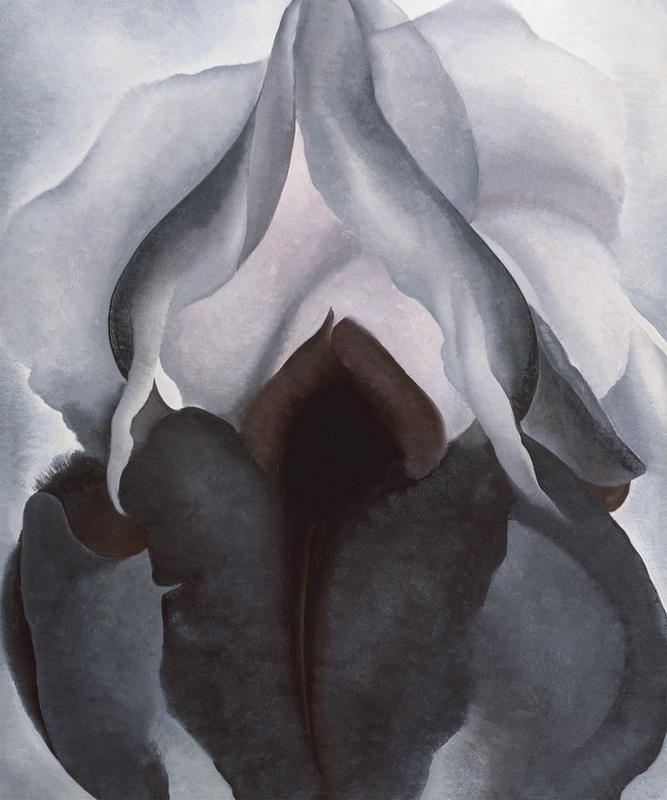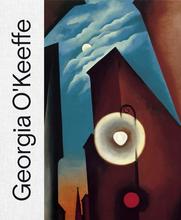More about Black Iris
- All
- Info
- Video
- Shop

Contributor
We’re all thinking it, so I’m going to just come out and say it: This Georgia O’Keeffe painting of a “flower” totally looks like a vagina.
We should probably keep these thoughts to ourselves though - I think if one more person says that her botanical studies look like genitalia, O’Keeffe will rise from the dead and come back to haunt us all. She spent her career trying to do her own thing and paint the simplistic beauty of life, and all us perverts looked at her art and went, nah, you’re a total lezbo feminist who loves coochies.
This was a real hot button issue for O’Keeffe (don’t pardon the pun, as it is great). She didn’t identify as a feminist and she loathed political art, yet many feminist artists identify her as a major inspiration and she was certainly a trailblazer for women succeeding in the arts. Judy Chicago even gave her a place setting in The Dinner Party, her vaginal homage to strong women throughout history. And her flower/vulva paintings were definitely culprit of O’Keeffe being typecast as a feminist artist.
But who knows, maybe things are as simple as they appear. It turns out that the black iris was one of her favorite flowers and she was only able to find them at a certain New York florists for about two weeks each June. O’Keeffe clearly preformed well under pressure because that is a pretty limited timeframe to pump out such a gorgeous recreation. The iris is a common image in Western art as well. This flower can be found all over the place in Christian imagery and is often used to represent the suffering of Mary. O’Keeffe came from a Christian family so this many have had some impact on her choice of imagery.
Vagina or not, O’Keeffe really had a knack for taking the ordinary and making it extraordinary. Perchance this is why most people cant help but see the sexual nature of this flower. We idolize sex in our culture and don’t really think twice about the unvarnished beauty of our natural world. As O’Keeffe explained, “I made you take time to look at what I saw and when you took time to really notice my flowers you hung all your own associations with flowers on my flower and you write about my flower as if I think and see what you think and see of the flower – and I don’t.”
Perhaps we have become jaded towards the natural beauty around us. I think we could take a lesson from this ingenious artist and try to accept things at face value a bit more…vaginas and flowers alike!
Featured Content
Here is what Wikipedia says about Black Iris (painting)
Black Iris, formerly called Black Iris III, is a 1926 oil painting by Georgia O'Keeffe. Art historian Linda Nochlin interpreted Black Iris as a morphological metaphor for female genitalia. O'Keeffe rejected such interpretations in a 1939 text accompanying an exhibition of her work, in which she wrote: "Well—I made you take time to look at what I saw and when you took time to really notice my flower you hung all your own associations with flowers on my flower and you write about my flower as if I think and see what you think and see of the flower—and I don't." She attempted to do away with sexualized readings of her work by adding a lot of detail.
It was first exhibited at the Intimate Gallery, New York from January 11 to February 27, 1927, where it was catalogued as DARK IRIS NO. 3. Unlike her previous shows, this show was largely devoid of the colourful paintings for which she had received critical acclaim. Lewis Mumford commented: "Yesterday O'Keeffe's exhibition opened … the show is strong: one long, loud blast of sex, sex in youth, sex in adolescence, sex in maturity, sex as gaudy as "Ten Nights in a Whorehouse," and sex as pure as the vigils of the vestal virgins, sex bulging, sex tumescent, sex deflated. After this description you'd better not visit the show: inevitably you'll be a little disappointed. For perhaps only half the sex is on the walls; the rest is probably in me." The painting remained in the collection of the artist from 1926 to 1969. It was on extended loan to the Metropolitan Museum of Art from 1949 to 1969, when it was donated as part of the Alfred Stieglitz Collection to the Metropolitan Museum of Art. The painting's title changed in 1991 from Black Iris III to Black Iris when the list of her works was revised.
The picture was in use on several episodes of The Handmaid's Tale in season 3. (Source: End credits of the show)
Check out the full Wikipedia article about Black Iris (painting)





















